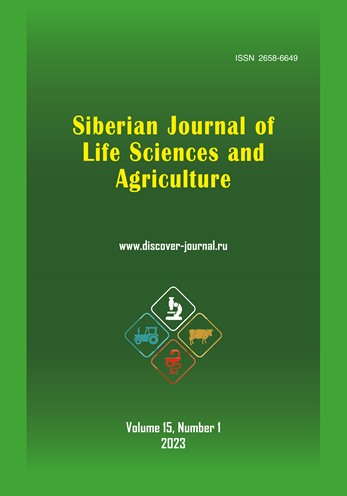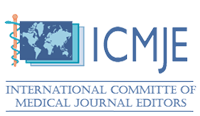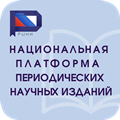ВЛИЯНИЕ ПРОФИЛАКТИЧЕСКОГО ПРИМЕНЕНИЯ ЦИНКА НА ОКИСЛИТЕЛЬНО-ВОССТАНОВИТЕЛЬНЫЙ СТАТУС В МОДЕЛИ MAFLD
Аннотация
Обоснование. Окислительный стресс играет важную роль в патогенезе метаболически-ассоциированной жировой болезни печени (MAFLD). В этом процессе участвуют антиоксидантные микроэлементы в качестве кофакторов и металлопротеинов. Цинк, являясь важным антиоксидантом, может оказывать положительное дейсткие при патологии печени.
Цель. Оценить влияние профилактического применения цинка на некоторые окислительно-восстановительные параметры ми морфологию печения на модели MAFLD у крыс.
Материалы и методы. В исследовании использовали 26 трехмесячных самок крыс линии Вистар. Оценивали активность супероксиддисмутазы и каталазы, содержание церулоплазмина, окисленного триптофана, дитирозинов, общих тиоловых и карбонильных соединений, ТБК-РС и мочевую кислоту на спектрофотометре. Статистическая обработка данных осуществлялась с помощью RStudio для MacOS (версия 1.3.1056).
Результаты. MAFLD сопровождалась гиперурикемией и снижением уровня дитирозинов в сыворотке крови. Добавление Zn в рацион предотвращало развитие стеатоза, снижало уровень окисленного триптофана в печени, но вызывало гиперурикемию в используемой модели MAFLD. Применение цинка оказало положительный эффект при профилактике MAFLD, мало влияло на окислительно-восстановительный статус животных, но вызвало парадоксальную гиперурикемию. Поэтому, необходимы дальнейшие исследования для установления механизмов действия цинка на клеточном уровне.
Скачивания
Литература
References
Araújo A.R., Rosso N., Bedogni G., Tiribelli C., Bellentani S. Global epidemiology of non-alcoholic fatty liver disease/non-alcoholic steatohepatitis: What we need in the future . Liver International, 2018, vol. 38, pp. 47-51. https://doi.org/10.1111/liv.13643
Asprouli E., Kalafati I. P., Sakellari A., Karavoltsos S., Vlachogiannakos J., Revenas K., ... & Kalogeropoulos, N. Evaluation of plasma trace elements in different stages of nonalcoholic fatty liver disease. Biological trace element research, 2019, vol. 188, no. 2, pp. 326-333. https://doi.org/10.1007/s12011-018-1432-9
Chen C, Zhou Q., Yang R., Wu Z., Yuan H., Zhang N., ... & Sun L. Copper exposure association with prevalence of non-alcoholic fatty liver disease and insulin resistance among US adults (NHANES 2011–2014). Ecotoxicology and Environmental Safety, 2021, vol. 218, pp. 112295.
Cruz K.J.C., de Oliveira A.R.S., Morais J.B.S., Severo J.S., Mendes P.M.V., de Sousa Melo S.R., ... & Marreiro D.D.N. Zinc and insulin resistance: biochemical and molecular aspects. Biological trace element research, 2018, vol. 186, no. 2, 407-412.
El Ridi R., & Tallima H. Physiological functions and pathogenic potential of uric acid: A review. Journal of advanced research, 2017, vol. 8, no. 5, pp. 487-493. https://doi.org/10.1016/j.jare.2017.03.003
Eslam M., Newsome P.N., Sarin S.K., Anstee Q.M., Targher G., Romero-Gomez M., ... & George J. A new definition for metabolic dysfunction-associated fatty liver disease: An international expert consensus statement. Journal of hepatology, 2020, vol. 73. no.1, 202-209. https://doi.org/10.1016/j.jhep.2020.03.039
Gatiatulina E.R., Popova E.V., Polyakova V.S., Skalnaya A.A., Agletdinov E.F., Nikonorov A.A., ... & Tinkov A.A. Evaluation of tissue metal and trace element content in a rat model of non-alcoholic fatty liver disease using ICP-DRC-MS. Journal of Trace Elements in Medicine and Biology, 2017, vol. 39, pp. 91-99. https://doi.org/10.1016/j.jtemb.2016.08.007
Halliwell B., Gutteridge J.M. Oxygen toxicity, oxygen radicals, transition metals and disease. Biochem J, 1984, vol. 219, pp. 1–14.
Halliwell B., Gutteridge J.M. Role of free radicals and catalytic metal ions in human disease: an overview. Methods Enzymol, 1990, vol. 186, pp. 1–85
Jarosz M., Olbert M., Wyszogrodzka G., Młyniec K., & Librowski T. Antioxidant and anti-inflammatory effects of zinc. Zinc-dependent NF-κB signaling. Inflammopharmacology, 2017, vol. 25, no. 1, pp. 11-24. https://doi.org/10.1007/s10787-017-0309-4
Jarvis H., Craig D., Barker R., Spiers G., Stow D., Anstee Q.M., Hanratty B. Metabolic risk factors and incident advanced liver disease in non-alcoholic fatty liver disease (NAFLD): A systematic review and meta-analysis of population-based observational studies. PLoS medicine, 2020, vol. 17(4), e1003100.
Korolyuk M.A., Ivanova I.G., Maiorova I.G. Metod opredeleniya aktivnosti katalazy [A method for measuring catalase activity]. Lab. Delo, 1988, vol. 1, pp. 16-18.
Lanaspa M.A., Sanchez-Lozada L.G., Choi Y.J., Cicerchi C., Kanbay M., Roncal-Jimenez C.A., ... & Johnson R.J. Uric acid induces hepatic steatosis by generation of mitochondrial oxidative stress: potential role in fructose-dependent and-independent fatty liver. Journal of Biological Chemistry, 2012, vol. 287, no. 48, 40732-40744. https://doi.org/10.1074/jbc.m112.399899
Levine R.L., Garland D., Oliver C.N., Amici A., Climent, I. Determination of carbonyl content in oxidatively modified proteins. Meth Enzymol, 1990, vol. 186, pp. 464–478.
Lizana P., Galdames M., Rodrigo R. Oxidative stress and endoplasmic reticulum stress as potential therapeutic targets in non-alcoholic fatty liver disease. Reactive Oxygen Species, 2017, vol. 4, no. 10, pp. 266-274. http://dx.doi.org/10.20455/ros.2017.847
Maiuolo J., Oppedisano F., Gratteri S., Muscoli C., Mollace V. Regulation of uric acid metabolism and excretion. International journal of cardiology, 2016, vol. 213, pp. 8-14. https://doi.org/10.1016/j.ijcard.2015.08.109
Miao-Lin H. Measurement of protein thiol groups and glutathione in plasma. Methods Enzymol, 1994, vol. 233, pp. 380-383. https://doi.org/10.1016/S0076-6879(94)33044-1
Misra H.P., Fridovich I. The role of superoxide anion in the autoxidation of epinephrine and a simple assay for superoxide dismutase. Journal of Biological chemistry, 1972, vol. 247, no. 10, pp. 3170-3175. https://doi.org/10.1016/S0021-9258(19)45228-9
Miyake T., Kumagi T., Furukawa S., Tokumoto Y., Hirooka M., Abe M., Hiasa Y., Matsuura B., Onji M. Non-alcoholic fatty liver disease: Factors associated with its presence and onset. J. Gastroenterol. Hepatol, 2013, vol. 28, pp. 71–78. https://doi.org/10.1111/jgh.12251
Moskalenko O.L., Smirnova O.V., Kasparov E.V., Kasparova I.E. Metabolicheskiy sindrom: otsenka kachestva zhizni, urovnya trevogi i depressii u patsientov. [Metabolic Syndrome: Assessment of Quality of Life, Anxiety and Depression in Patients]. Siberian Journal of Life Sciences and Agriculture, 2021, vol. 13, no. 6, pp. 11-28. https://doi.org/10.12731/2658-6649-2021-13-6-11-28
Ohkawa, H., Ohishi, N., & Yagi, K. Assay for lipid peroxides in animal tissues by thiobarbituric acid reaction. Analytical biochemistry, 1979, vol. 95, no. 2, pp. 351-358. https://doi.org/10.1016/0003-2697(79)90738-3
Olechnowicz, J., Tinkov, A., Skalny, A., & Suliburska, J. Zinc status is associated with inflammation, oxidative stress, lipid, and glucose metabolism. The Journal of Physiological Sciences, 2018, vol. 68, no. 1, pp. 19-31.
Oral, A., Sahin, T., Turker, F., & Kocak, E. Relationship between serum uric acid levels and nonalcoholic fatty liver disease in non-obese patients. Medicina, 2019, vol. 55, no. 9, pp. 600. https://doi.org/10.3390/medicina55090600
Oteiza, P. I. Zinc and the modulation of redox homeostasis. Free Radic. Biol. Med, 2012, vol. 53, no. 9, pp. 1748-1759. https://doi.org/10.1007/s12576-017-0571-7
Prasad, A. S. (Ed.). Essential and toxic element: trace elements in human health and disease. Elsevier, 2013.
Ravin, H. A. An improved colorimetric enzymatic assay of ceruloplasmin. The Journal of laboratory and clinical medicine, 1961, vol. 58, no. 1, pp. 161-168. https://doi.org/10.5555/uri:pii:0022214361901391
Sies, H., & Jones, D. P. Reactive oxygen species (ROS) as pleiotropic physiological signalling agents. Nature reviews Molecular cell biology, 2020, vol. 21, no. 7, pp. 363-383. https://doi.org/10.1038/s41580-020-0230-3
So, A., & Thorens, B. Uric acid transport and disease. The Journal of clinical investigation, 2010, vol. 120, no. 6, pp. 1791-1799. https://doi.org/10.1172/jci42344
Song M., Vos M., Mcclain C. Copper-fructose interactions: a novel mechanism in the pathogenesis of NAFLD. Nutrients. 2018; 10: 1815.
Tilg H., Effenberger M. From NAFLD to MAFLD: when pathophysiology succeeds. Nature reviews Gastroenterology & hepatology, 2020, vol. 17, no. 7, pp. 387-388. https://doi.org/10.1038/s41575-020-0316-6
Umeki S., Ohga R., Konishi Y., Yasuda T., Morimoto K., Terao A. Oral zinc therapy normalizes serum uric acid level in Wilson’s disease patients. The American journal of the medical sciences, 1986, vol. 292, no. 5, pp. 289-292. https://doi.org/10.1097/00000441-198611000-00007
Ushijima Y., Nakano,M., Goto T. Production and identification of bityrosine in horseradish peroxidase-H2O2-tyrosine system. Biochemical and biophysical research communications, 1984, vol. 125, no. 3, pp. 916-918. https://doi.org/10.1016/0006-291X(84)91370-6
Videla L. A., Rodrigo R., Orellana M., Fernandez V., Tapia G., Quiñones L., ... Poniachik J. Oxidative stress-related parameters in the liver of non-alcoholic fatty liver disease patients. Clinical science, 2004, vol. 106, no. 3, pp. 261-268. https://doi.org/10.1042/CS20030285
Yesilova Z., Yaman H., Oktenli C., Ozcan A., Uygun A., Cakir E., ... Dagalp K. Systemic markers of lipid peroxidation and antioxidants in patients with nonalcoholic fatty liver disease. Official journal of the American College of Gastroenterology| ACG, 2005, vol. 100, no. 4, pp. 850-855. https://doi.org/10.1111/j.1572-0241.2005.41500.x
Zhang Y., Liu Y., Qiu H. Association between dietary zinc intake and hyperuricemia among adults in the United States. Nutrients, 2018, vol. 10, no. 5, pp. 568.
Список литературы
Araújo A.R., Rosso N., Bedogni G., Tiribelli C., Bellentani S. Global epidemiology of non-alcoholic fatty liver disease/non-alcoholic steatohepatitis: What we need in the future // Liver International, 2018, vol. 38, pp. 47-51. https://doi.org/10.1111/liv.13643
Asprouli E., Kalafati I. P., Sakellari A., Karavoltsos S., Vlachogiannakos J., Revenas K., ... Kalogeropoulos N. Evaluation of plasma trace elements in different stages of nonalcoholic fatty liver disease // Biological trace element research, 2019, vol. 188, no. 2, pp. 326-333. https://doi.org/10.1007/s12011-018-1432-9
Chen C, Zhou Q., Yang R., Wu Z., Yuan H., Zhang N., ... Sun L. Copper exposure association with prevalence of non-alcoholic fatty liver disease and insulin resistance among US adults (NHANES 2011–2014) // Ecotoxicology and Environmental Safety, 2021, vol. 218, pp. 112295.
Cruz K.J.C., de Oliveira A.R.S., Morais J.B.S., Severo J.S., Mendes P.M.V., de Sousa Melo S.R., ... Marreiro D.D.N. Zinc and insulin resistance: biochemical and molecular aspects // Biological trace element research, 2018, vol. 186, no. 2, pp. 407-412.
El Ridi R., Tallima H. Physiological functions and pathogenic potential of uric acid: A review // Journal of advanced research, 2017, vol. 8, no. 5, pp. 487-493. https://doi.org/10.1016/j.jare.2017.03.003
Eslam M., Newsome P.N., Sarin S.K., Anstee Q.M., Targher G., Romero-Gomez M., ... George J. A new definition for metabolic dysfunction-associated fatty liver disease: An international expert consensus statement // Journal of hepatology, 2020, vol. 73. no. 1, pp. 202-209. https://doi.org/10.1016/j.jhep.2020.03.039
Gatiatulina E.R., Popova E.V., Polyakova V.S., Skalnaya A.A., Agletdinov E.F., Nikonorov A.A., ... Tinkov A.A. Evaluation of tissue metal and trace element content in a rat model of non-alcoholic fatty liver disease using ICP-DRC-MS // Journal of Trace Elements in Medicine and Biology, 2017, vol. 39, pp. 91-99. https://doi.org/10.1016/j.jtemb.2016.08.007
Halliwell B., Gutteridge J.M. Oxygen toxicity, oxygen radicals, transition metals and disease // Biochem J, 1984, vol. 219, pp. 1–14.
Halliwell B., Gutteridge J.M. Role of free radicals and catalytic metal ions in human disease: an overview // Methods Enzymol, 1990, vol. 186, pp. 1–85.
Jarosz M., Olbert M., Wyszogrodzka G., Młyniec K., Librowski T. Antioxidant and anti-inflammatory effects of zinc. Zinc-dependent NF-κB signaling // Inflammopharmacology, 2017, vol. 25, no. 1, pp. 11-24. https://doi.org/10.1007/s10787-017-0309-4
Jarvis H., Craig D., Barker R., Spiers G., Stow D., Anstee Q.M., Hanratty B. Metabolic risk factors and incident advanced liver disease in non-alcoholic fatty liver disease (NAFLD): A systematic review and meta-analysis of population-based observational studies // PLoS medicine, 2020, vol. 17(4), e1003100.
Королюк, М. А., Иванова, Л. К., Майорова, И. Г., Токарева, В. А. Метод определения активности каталазы // Лабораторное дело. 1988. №4. С. 44-47.
Lanaspa M.A., Sanchez-Lozada L.G., Choi Y.J., Cicerchi C., Kanbay M., Roncal-Jimenez C.A., ... & Johnson R.J. Uric acid induces hepatic steatosis by generation of mitochondrial oxidative stress: potential role in fructose-dependent and-independent fatty liver // Journal of Biological Chemistry, 2012, vol. 287, no. 48, 40732-40744. https://doi.org/10.1074/jbc.m112.399899
Levine R.L., Garland D., Oliver C.N., Amici A., Climent, I. Determination of carbonyl content in oxidatively modified proteins // Meth Enzymol, 1990, vol. 186, pp. 464–478.
Lizana P., Galdames M., Rodrigo R. Oxidative stress and endoplasmic reticulum stress as potential therapeutic targets in non-alcoholic fatty liver diseas // Reactive Oxygen Species, 2017, vol. 4, no. 10, pp. 266-274. http://dx.doi.org/10.20455/ros.2017.847
Maiuolo J., Oppedisano F., Gratteri S., Muscoli C., Mollace V. Regulation of uric acid metabolism and excretion // International journal of cardiology, 2016, vol. 213, pp. 8-14. https://doi.org/10.1016/j.ijcard.2015.08.109
Miao-Lin H. Measurement of protein thiol groups and glutathione in plasma // Methods Enzymol, 1994, vol. 233, pp. 380-383. https://doi.org/10.1016/S0076-6879(94)33044-1
Misra H.P., Fridovich I. The role of superoxide anion in the autoxidation of epinephrine and a simple assay for superoxide dismutase // Journal of Biological chemistry, 1972, vol. 247, no. 10, pp. 3170-3175. https://doi.org/10.1016/S0021-9258(19)45228-9
Miyake T., Kumagi T., Furukawa S., Tokumoto Y., Hirooka M., Abe M., Hiasa Y., Matsuura B., Onji M. Non-alcoholic fatty liver disease: Factors associated with its presence and onset // J. Gastroenterol. Hepatol, 2013, vol. 28, pp. 71–78. https://doi.org/10.1111/jgh.12251
Москаленко О. Л., Смирнова О. В., Каспаров Э. В., Каспарова И. Э. Метаболический синдром: оценка качества жизни, уровня тревоги и депрессии у пациентов // Siberian Journal of Life Sciences and Agriculture, 2021, vol. 13, no. 6, P.11-28.
Ohkawa, H., Ohishi, N., & Yagi, K. Assay for lipid peroxides in animal tissues by thiobarbituric acid reaction // Analytical biochemistry, 1979, vol. 95, no. 2, pp. 351-358. https://doi.org/10.1016/0003-2697(79)90738-3
Olechnowicz, J., Tinkov, A., Skalny, A., & Suliburska, J. Zinc status is associated with inflammation, oxidative stress, lipid, and glucose metabolism // The Journal of Physiological Sciences, 2018, vol. 68, no. 1, pp. 19-31.
Oral, A., Sahin, T., Turker, F., & Kocak, E. Relationship between serum uric acid levels and nonalcoholic fatty liver disease in non-obese patients // Medicina, 2019, vol. 55, no. 9, pp. 600. https://doi.org/10.3390/medicina55090600
Oteiza, P. I. Zinc and the modulation of redox homeostasis // Free Radic. Biol. Med, 2012, vol. 53, no. 9, pp. 1748-1759. https://doi.org/10.1007/s12576-017-0571-7
Prasad, A. S. (Ed.). Essential and toxic element: trace elements in human health and disease. Elsevier, 2013.
Ravin, H. A. An improved colorimetric enzymatic assay of ceruloplasmin // The Journal of laboratory and clinical medicine, 1961, vol. 58, no. 1, pp. 161-168. https://doi.org/10.5555/uri:pii:0022214361901391
Sies, H., Jones, D. P. Reactive oxygen species (ROS) as pleiotropic physiological signalling agents // Nature reviews Molecular cell biology, 2020, vol. 21, no. 7, pp. 363-383. https://doi.org/10.1038/s41580-020-0230-3
So, A., Thorens, B. Uric acid transport and disease // The Journal of clinical investigation, 2010, vol. 120, no. 6, pp. 1791-1799. https://doi.org/10.1172/jci42344
Song M., Vos M., Mcclain C. Copper-fructose interactions: a novel mechanism in the pathogenesis of NAFLD // Nutrients. 2018; 10: 1815.
Tilg H., Effenberger M. From NAFLD to MAFLD: when pathophysiology succeeds // Nature reviews Gastroenterology & hepatology, 2020, vol. 17, no. 7, pp. 387-388. https://doi.org/10.1038/s41575-020-0316-6
Umeki S., Ohga R., Konishi Y., Yasuda T., Morimoto K., Terao A. Oral zinc therapy normalizes serum uric acid level in Wilson’s disease patients // The American journal of the medical sciences, 1986, vol. 292, no. 5, pp. 289-292. https://doi.org/10.1097/00000441-198611000-00007
Ushijima Y., Nakano M., Goto T. Production and identification of bityrosine in horseradish peroxidase-H2O2-tyrosine system // Biochemical and biophysical research communications, 1984, vol. 125, no. 3, pp. 916-918. https://doi.org/10.1016/0006-291X(84)91370-6
Videla L. A., Rodrigo R., Orellana M., Fernandez V., Tapia G., Quiñones L., ... Poniachik J. Oxidative stress-related parameters in the liver of non-alcoholic fatty liver disease patients // Clinical science, 2004, vol. 106, no. 3, pp. 261-268. https://doi.org/10.1042/CS20030285
Yesilova Z., Yaman H., Oktenli C., Ozcan A., Uygun A., Cakir E., ... Dagalp K. Systemic markers of lipid peroxidation and antioxidants in patients with nonalcoholic fatty liver disease // Official journal of the American College of Gastroenterology| ACG, 2005, vol. 100, no. 4, pp. 850-855. https://doi.org/10.1111/j.1572-0241.2005.41500.x
Zhang Y., Liu Y., Qiu H. Association between dietary zinc intake and hyperuricemia among adults in the United States // Nutrients, 2018, vol. 10, no. 5, pp. 568.
Просмотров аннотации: 282 Загрузок PDF: 184
Copyright (c) 2023 Eugenia R. Nikonorova, Alexandr A. Nikonorov, Elizaveta V. Popova, Eduard F. Agletdinov, Anton I. Sinitskii, Alexey A. Tinkov

Это произведение доступно по лицензии Creative Commons «Attribution-NonCommercial-NoDerivatives» («Атрибуция — Некоммерческое использование — Без производных произведений») 4.0 Всемирная.






















































